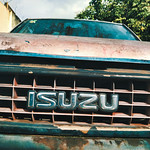In search for the Guyanas
Where, three years ago, we flew to Manaus, in the middle of the Amazon, to take the slow boat to the coastal metropolis of Belém, now we flew to Manaus for an overland trek, via Guyana, Suriname and French Guyana, to the Brazilian province of Amapá, once known as Portuguese Guiana.
There once was also a Spanish Guyana. Still referred to as the Guyana Region of Venezuela, it now encompasses the states of Amazonas, Bolivar and Delta Amacuro. But, given the current state of affairs, Venezuela is not the most practical country to visit.
Additionally, Venezuela and Guyana have been caught up in a long-running border dispute. Venezuela claims what they call the area of Guayana Esequiba, which encompasses more than half the country of Guyana, bordering Venezuela, and is named after the river flowing through it, called the Essequibo by the Gyanese. The dispute goes back to colonial times, back to before when the Spanish and Dutch signed off on, in the Peace of Münster in 1648, a mutually agreeable border.
Shortly before Guyana’s independence in 1966, with the Treaty of Geneva, signed by the United Kingdom, Venezuela and British Guiana (the ‘i’ and ‘y’ are indeed fungible) the parties agreed to find a “practical, peaceful and satisfactory solution” to the dispute.
Clearly, there’s no rush.
History has long arms, however. Within the last few years, major oil reserves were identified in the offshore area claimed by Guyana, drilling of which is expected to come online in 2020. Guyana stands to benefit immensely, currently at a GDP per capita that’s close to the lowest in South and Central America (with the exception of battered Haiti), half the GDP per capital of Brazil. But, of course, Venezuela being in dire need of cash needs every possible infusion of stable currency for its president to stand a chance to survive.
Meanwhile, as if the two countries just decided, many decades ago, to sit this one out, there is absolutely no way to travel overland between Venezuela and Guyana. On the Venezuelan side, roads skirt the de-facto border in a few places, but on the Guyanese side, the nearest you can get to the border by car from the capital Georgetown is a village still hundreds of kilometres from the border.
That said, Jonestown (yes, the one of the massacre) has a few roads diverging from it, and is close to the border. But, the only way to get there is by airlift.
Back in Manaus, we took it easy. We went swimming in the Rio Negro, in a pouring rain, happened upon a Christmas performance at the Teatro Amazonas, and mostly just ate well.
When leaving, on what most were calling the last working day of the year, the local bus drivers had decided to go on strike. Not unreasonable after not having received pay for three months.
It meant we had to get an Uber through snail-paced traffic to the bus station, where we found a few hundred Venezuelans camped out, on the edge of town. A fraction of the three million that have been said to have left Venezuela in the last few years, most opting to visit Colombia, where many have relatives after many Colombians fled to Venezuela during the rough patch that country went through while trying to deal with its own internal strife.















